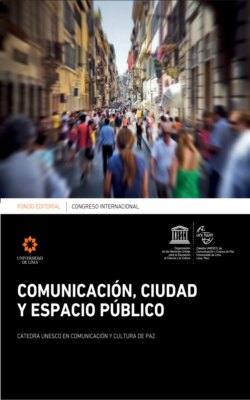Читать книгу Congreso Internacional Comunicación, ciudad y espacio público - Ángeles Margarita Maqueira Yamasaki - Страница 12
Encoding, Decoding
ОглавлениеThe working sessions at the ROL workshops contributed significantly for the successful outcome of the Punt en Komma’s design decision-making process. This working method created a medium for meaningful communication between designers and users. This was instrumental to avoid the alienating factor of using jargon in discussions on aesthetic principles, technical constraints, political agendas, and cultural idiosyncrasies. In effect, as Stuart Hall points out in his 1980 essay Encoding, decoding, “if no ‘meaning’ is taken, there can be no ‘consumption’” (Hall, 2007, p. 91)20. The participation of the stakeholders in the development of the layout for the dwelling of Punt en Komma reveals, then, a practice that goes beyond a mere empowerment of the users in design decision-making processes. It creates a platform where aesthetic communication can be conveyed through an actual spatial experience where the disciplinary codes can have a meaningful decoding as social practices. This process, however, is not linear. In the design process, there are different stages and moments with relative autonomy that, nevertheless, reproduce structures of power. Hall’s essay offers a sound theoretical framework to analyse the production and dissemination of messages, which can be valuable to discuss the case of citizens’ participation in design decision-making processes.
According to Stuart Hall, there are four linked but distinctive moments in the process of communication: production, circulation, distribution / consumption, and reproduction. Consumption, for Hall, is an indissoluble moment of the production process, and “the message-form is the necessary form of appearance of the event in its passage from source to receiver” (Hall, 2007, p. 92). He thus contends that “before this message can have an ‘effect’ (however defined), satisfy a ‘need’ or be put to a ‘use’, it must first be appropriated as a meaningful discourse and be meaningfully decoded” (Hall, 2007, p. 93).
I would thus suggest the working sessions at the ROL workshops, illustrates a successful attempt to translate the codes of the architecture discipline to the decoder-receiver. The communicative exchange is reciprocal, though not symmetrical. There is reciprocity, for example, in the way the architect, as an encoder-producer, benefits from the receiver’s understanding of the message; it constitutes a source for his continuous production, which eventually contributes to improve the process of consumption/reception. However, the positions at each end of the process, in this case the architect and the dweller, are not symmetrical or equivalent. As Stuart Hall highlights, there is no code with a transparent, or “natural” representation of the real. Hence, this inevitably sparks misunderstandings, or distorted communication, which creates discrepancies in the relation between encoder and decoder, thus resulting in three positions: the dominant-hegemonic, the negotiated, and the oppositional21.
